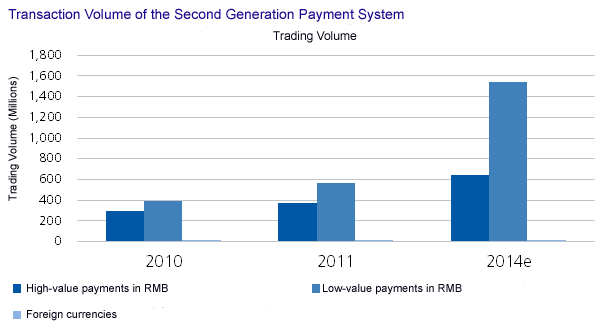Electronic payments in China are developing rapidly. In 2011, the number of transactions increased by 38%, reaching a total of 936 million. In order to promote the development of China’s electronic payments industry, the People’s Bank of China introduced the second generation payments system, China National Advanced Payment System 2 (CNAPS2). The system will have a huge impact on both the banking industry and on the third party payments industry.
CNAPS2 went live on a pilot basis in 2010 and will go fully live in October 2012. In the report, China’s Second Generation Payment System: Implications for Banks and Third Party Providers, Celent examines CNAPS2, the new business areas that the enhanced system will support, and its likely effect on banks and non-bank payments providers, and future developments of the platform.
CNAPS2 will significantly affect the way banks do business. Previously, only internal bank transfers were possible in China, but the new system supports interbank transactions. Celent expects that the resulting increased liquidity of funds will weaken the advantages the large state-owned bank currently derive from their large branch networks and massive customer bases.
CNAPS2 supports 18 transaction types, which will enable banks to provide enhanced cash management services for corporates, as well as personal financial management services for the retail market. Access by non-banks is currently limited, but the expected opening of the system to non-banks will provide opportunities for these third-party players to disinter mediate banks.

“The second generation payment system will be among the most important pieces of banks’ infrastructure,” says Hua Zhang, analyst with Celent’s Asian Financial Services Group and author of the report. “Switching over to the system will require a good deal of preparation, but will give rise to corresponding opportunities for both banks and IT firms.”
The report describes the improvement of CNAPS2, the impact on banks and third party payment providers, the prospects for electronic payment by PBoC, and Celent’s recommendations.
This 20-page report contains five figures and three tables.
A Chinese version is also available.





